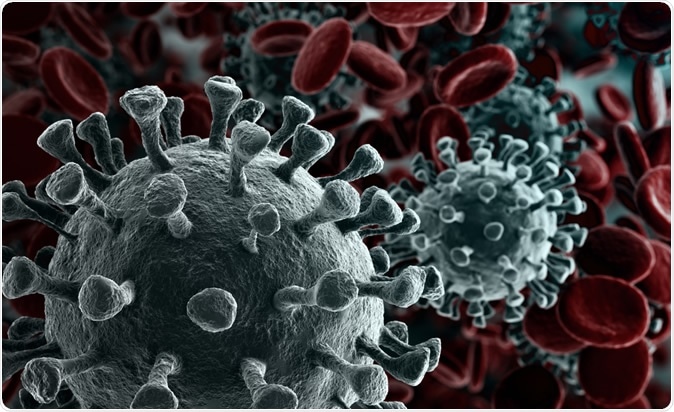The Wuhan coronavirus, or the 2019-nCoV, which originated in Wuhan City in Hubei province infected more than 7,700 people with the death toll topping more than 170. China reports 38 deaths in just 24 hours, making the outbreak one of the deadliest ones the country has faced.
In the study, the team described the new coronavirus outbreak as a mysterious pneumonia-like illness that started in Wuhan City, in China. The researchers reported the infection’s epidemiological, clinical, laboratory, and radiological characteristics, treatment and clinical outcomes of 99 patients with laboratory-confirmed 2019-nCoV.
The patients came from various hospitals in Wuhan and were transferred to Jinyintan Hospital, an infectious disease hospital tasked to admit the first cases of the novel coronavirus. They were admitted between January 1 and 20, 2020.

Coronavirus 2019-nCov novel coronavirus illustration: Image Credit: Creativeneko / Shutterstock
Epidemiological data and history
The researchers used clinical records, imaging findings, and laboratory results of the patients to determine the common findings among the patients. About half of the patients had visited the Huanan seafood market, the place where the virus first emerged, while aa majority of the patients were middle-aged with an average age of 55 years old. Further, most patients (67 patients) were males, while 46 patients worked at the market as vendors or managers.
Of the 99 cases, 50 cases were individuals with underlying chronic illnesses, such as cardiovascular disease, hypertension, and diabetes. Upon admission to the hospital, all the patients manifested pneumonia-like illness, were many of them had inflammation and infected lungs. Included in the 99 patients were the 41 patients featured on Jan. 24 by the same study.
Common symptoms reported
The most common symptoms reported by the patients include fever, cough, and fatigue. Less common symptoms include headache, coughing up blood, sputum production, and diarrhea. Half of the patients developed shortness of breath or difficulty breathing.
About 82 patients presented with fever, 81 of them had a cough, and a third of the patients experienced the difficulty of breathing and shortness of breath. Five patients, who were critically ill, developed coinfections with fungi and bacteria.
Most of the patients also developed lymphopenia, a condition of having abnormally low levels of lymphocytes, which are important for immune response. Lymphopenia is linked to an ongoing infection and immunodeficiency, or the immune system doesn’t have the ability to fight serious infections.
Most of the patients manifested pneumonia with abnormal findings on chest CT scan, while the common complications seen in the patients include acute respiratory distress syndrome (ARDS), acute cardiac injury, and secondary infection. Of the patients, 17 developed ARDS and 11 of them succumbed to multiple organ failure.
Treatment included antivirals, antibiotics, and oxygen therapy. Among the patients, about half are still admitted to the hospital and a third has been discharged as of Jan. 25.
“The 2019-nCoV infection caused clusters of severe respiratory illness similar to severe acute respiratory syndrome coronavirus and was associated with ICU admission and high mortality. Major gaps in our knowledge of the origin, epidemiology, duration of human transmission, and clinical spectrum of the disease need fulfillment by future studies,” the authors concluded and recommended in the study.
Though the study involved a large number of patients, more data is needed to determine accurate data about the disease process, manifestations, and health outcomes of those infected with the deadly virus.
Journal reference:
Clinical features of patients infected with 2019 novel coronavirus in Wuhan, China Huang, Chaolin et al. The Lancet, https://www.thelancet.com/journals/lancet/article/PIIS0140-6736(20)30183-5/fulltext